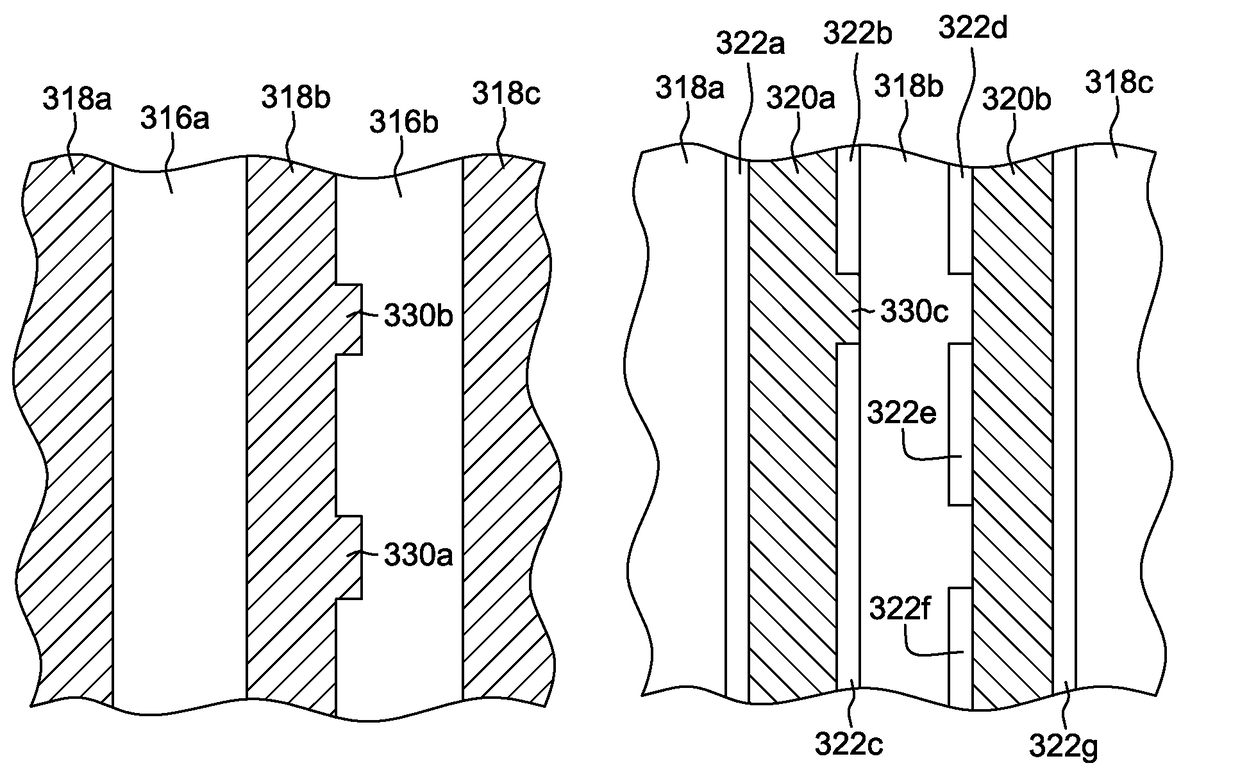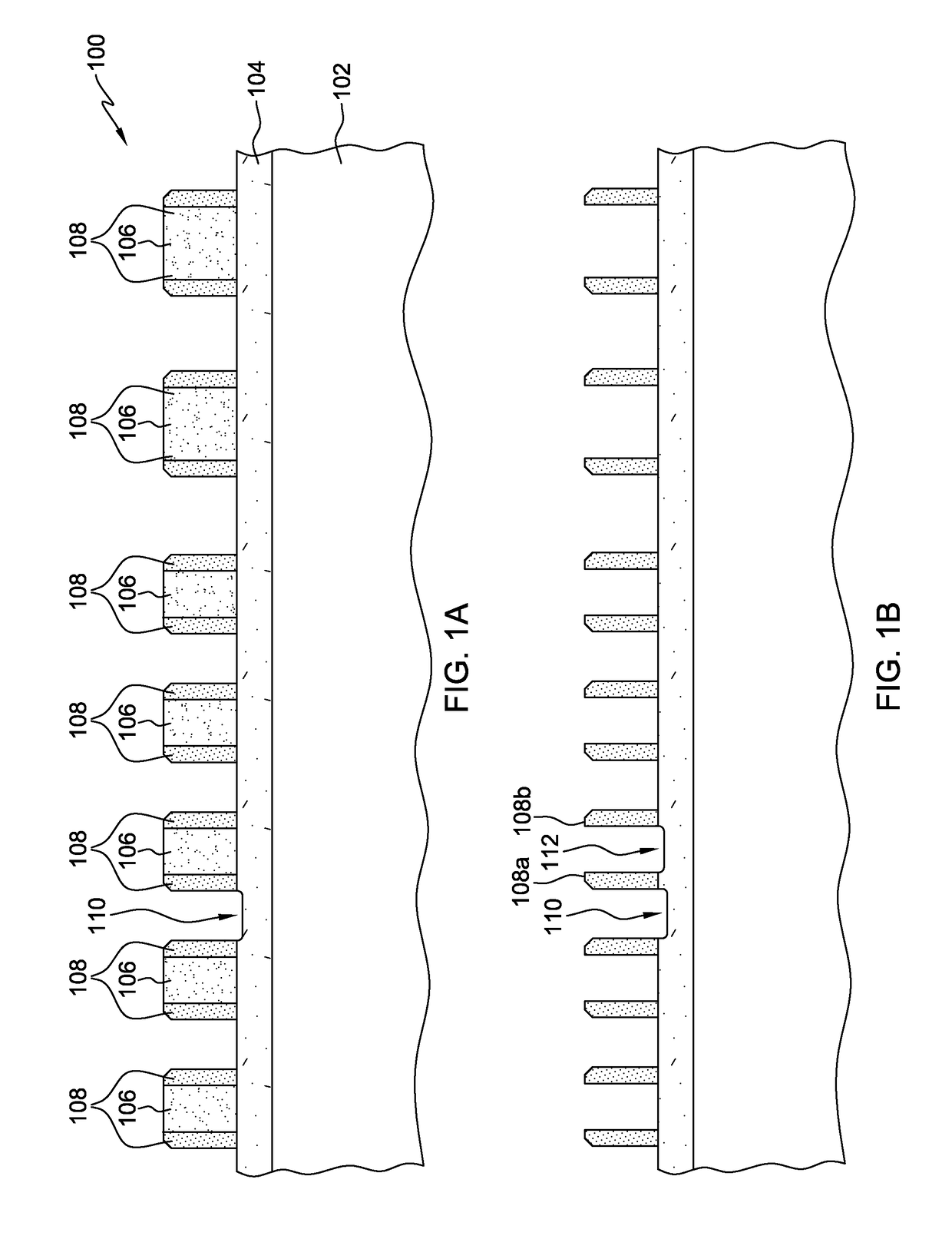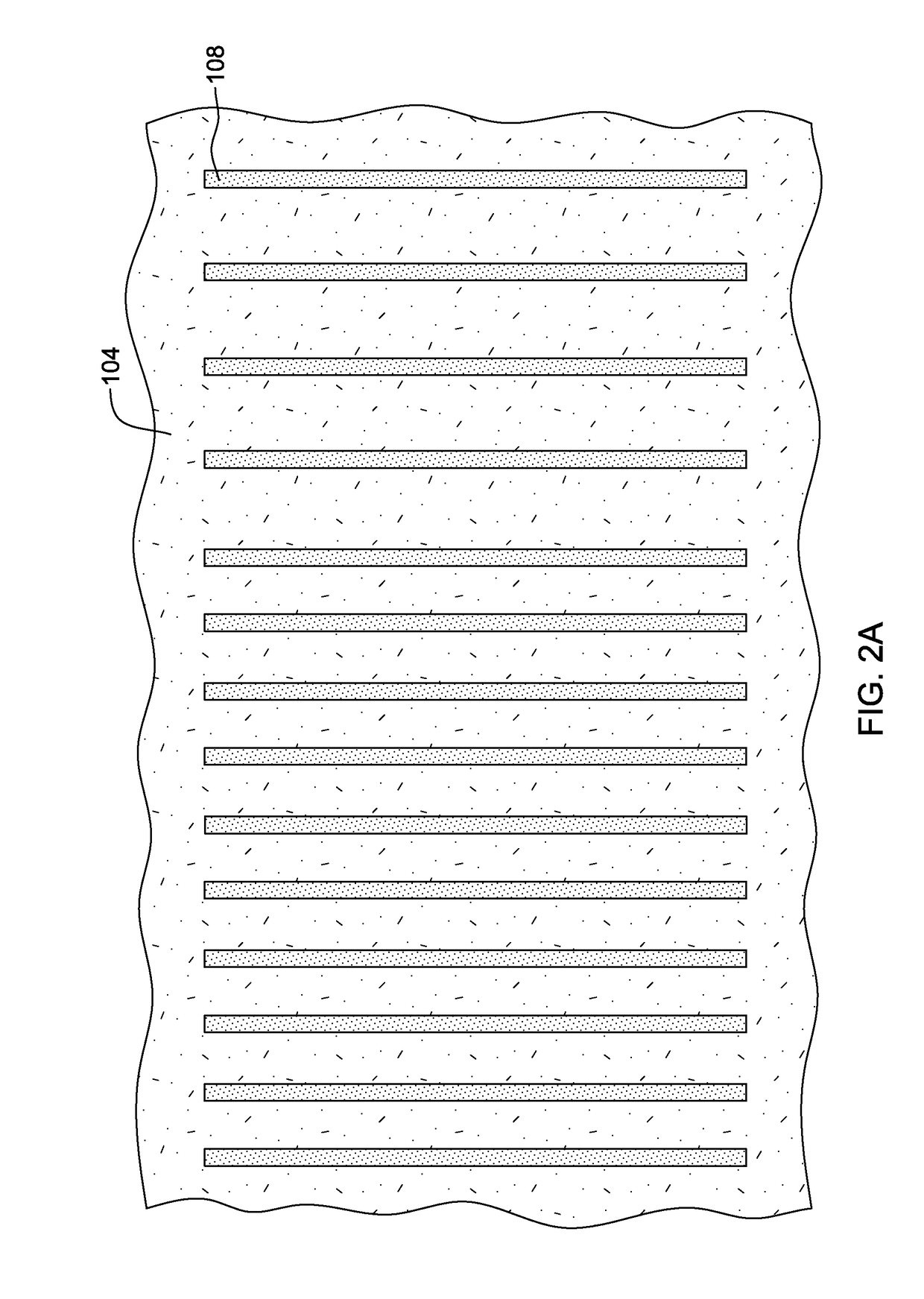Alternating space decomposition in circuit structure fabrication
a technology of circuit structure and decomposition space, which is applied in the direction of optics, photomechanical equipment, instruments, etc., can solve the problems of undesirable effects, continuous shrinkage of circuit dimensions and device features, etc., and achieve the effect of facilitating the fabrication of circuit structures
- Summary
- Abstract
- Description
- Claims
- Application Information
AI Technical Summary
Benefits of technology
Problems solved by technology
Method used
Image
Examples
Embodiment Construction
[0010]Described herein are alternating space decomposition techniques in which edges of elements to be formed in a material layer over a substrate are defined using multiple exposures. The edges may defined by exposing a resist material that is disposed over a hardmask material layer. The exposure may include multiple (e.g. two) exposures, where edges of the elements to be formed in the hardmask material layer are defined by the exposures. More particularly, for a single element formed, the positioning of edges of that single element may be defined by the multiple exposures, where one exposure defines positioning of at least one edge of the element, and another exposure defines positioning of at least one other edge of the element. Using multiple different exposures to define edges of a single element enables the edges of that element to be closer in proximity to each other, thereby reducing critical dimension and shrinking overall feature size.
[0011]Aspects described herein can als...
PUM
| Property | Measurement | Unit |
|---|---|---|
| width | aaaaa | aaaaa |
| width | aaaaa | aaaaa |
| densities | aaaaa | aaaaa |
Abstract
Description
Claims
Application Information
 Login to view more
Login to view more - R&D Engineer
- R&D Manager
- IP Professional
- Industry Leading Data Capabilities
- Powerful AI technology
- Patent DNA Extraction
Browse by: Latest US Patents, China's latest patents, Technical Efficacy Thesaurus, Application Domain, Technology Topic.
© 2024 PatSnap. All rights reserved.Legal|Privacy policy|Modern Slavery Act Transparency Statement|Sitemap



